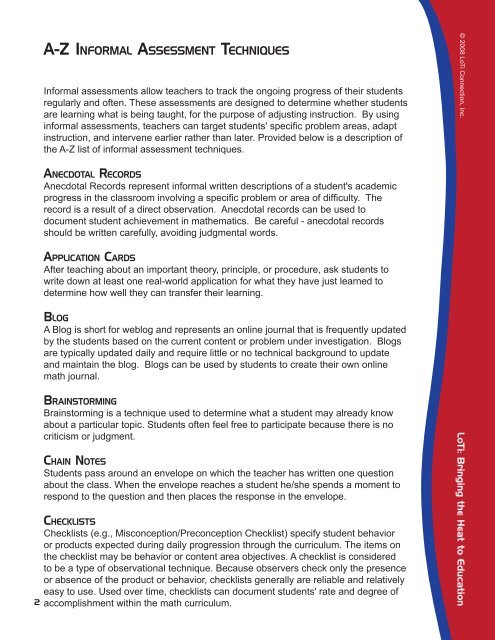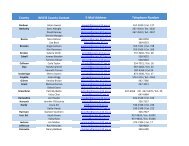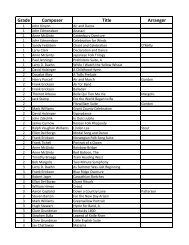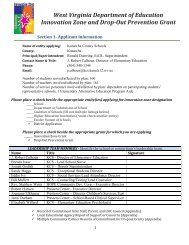Informal Assessment Strategies: A-Z for the Math Classroom
Informal Assessment Strategies: A-Z for the Math Classroom
Informal Assessment Strategies: A-Z for the Math Classroom
Create successful ePaper yourself
Turn your PDF publications into a flip-book with our unique Google optimized e-Paper software.
A-Z In<strong>for</strong>mAl <strong>Assessment</strong> technIques<br />
<strong>In<strong>for</strong>mal</strong> assessments allow teachers to track <strong>the</strong> ongoing progress of <strong>the</strong>ir students<br />
regularly and often. These assessments are designed to determine whe<strong>the</strong>r students<br />
are learning what is being taught, <strong>for</strong> <strong>the</strong> purpose of adjusting instruction. By using<br />
in<strong>for</strong>mal assessments, teachers can target students' specific problem areas, adapt<br />
instruction, and intervene earlier ra<strong>the</strong>r than later. Provided below is a description of<br />
<strong>the</strong> A-Z list of in<strong>for</strong>mal assessment techniques.<br />
AnecdotAl records<br />
Anecdotal Records represent in<strong>for</strong>mal written descriptions of a student's academic<br />
progress in <strong>the</strong> classroom involving a specific problem or area of difficulty. The<br />
record is a result of a direct observation. Anecdotal records can be used to<br />
document student achievement in ma<strong>the</strong>matics. Be careful - anecdotal records<br />
should be written carefully, avoiding judgmental words.<br />
ApplIcAtIon cArds<br />
After teaching about an important <strong>the</strong>ory, principle, or procedure, ask students to<br />
write down at least one real-world application <strong>for</strong> what <strong>the</strong>y have just learned to<br />
determine how well <strong>the</strong>y can transfer <strong>the</strong>ir learning.<br />
Blog<br />
A Blog is short <strong>for</strong> weblog and represents an online journal that is frequently updated<br />
by <strong>the</strong> students based on <strong>the</strong> current content or problem under investigation. Blogs<br />
are typically updated daily and require little or no technical background to update<br />
and maintain <strong>the</strong> blog. Blogs can be used by students to create <strong>the</strong>ir own online<br />
math journal.<br />
BrAInstormIng<br />
Brainstorming is a technique used to determine what a student may already know<br />
about a particular topic. Students often feel free to participate because <strong>the</strong>re is no<br />
criticism or judgment.<br />
chAIn notes<br />
Students pass around an envelope on which <strong>the</strong> teacher has written one question<br />
about <strong>the</strong> class. When <strong>the</strong> envelope reaches a student he/she spends a moment to<br />
respond to <strong>the</strong> question and <strong>the</strong>n places <strong>the</strong> response in <strong>the</strong> envelope.<br />
checklIsts<br />
Checklists (e.g., Misconception/Preconception Checklist) specify student behavior<br />
or products expected during daily progression through <strong>the</strong> curriculum. The items on<br />
<strong>the</strong> checklist may be behavior or content area objectives. A checklist is considered<br />
to be a type of observational technique. Because observers check only <strong>the</strong> presence<br />
or absence of <strong>the</strong> product or behavior, checklists generally are reliable and relatively<br />
easy to use. Used over time, checklists can document students' rate and degree of<br />
accomplishment within <strong>the</strong> math curriculum.<br />
© 2008 LoTi Connection, Inc.<br />
LoTi: Bringing <strong>the</strong> Heat to Education











